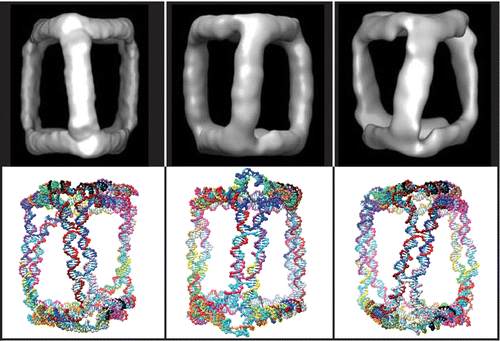|
|
Characterizing DNA star-tile-based nanostructures using a coarse-grained model
John S. Schreck, Flavio Romano, Matthew H. Zimmer, Ard A. Louis and Jonathan P.K. Doye
ACS Nano, 10, 4236-4247 (2016)

Abstract
We use oxDNA, a coarse-grained model of DNA at the nucleotide level, to simulate large nanoprisms that are composed of multi-arm star tiles, in which the size of bulge loops that have been incorporated into the tile design are used to control the exibility of the tiles. The oxDNA model predicts equilibrium structures for several diㄦent nanoprism designs that are in excellent agreement with the experimental structures as measured by cryoTEM. In particular we reproduce:the chiral twisting of the top and bottom faces of the nanoprisms as the bulge sizes in these structures are varied due to the greater exibility of larger bulges. We are also able to follow how the properties of the star tiles evolve as the prisms are assembled. Individual star tiles are very exible, but their structures become increasingly well-defined and rigid as they are incorporated into larger assemblies. oxDNA also finds that the experimentally observed prisms to be more stable than their inverted counterparts, but interestingly this preference for the arms of the tiles to bend in a given direction only emerges after they are part of larger assemblies. These results show the potential for oxDNA to both provide detailed structural insight and predict the properties of DNA nanostructures.The full paper is available from ACS Nano and for non-subscribers from ACS articles on request.